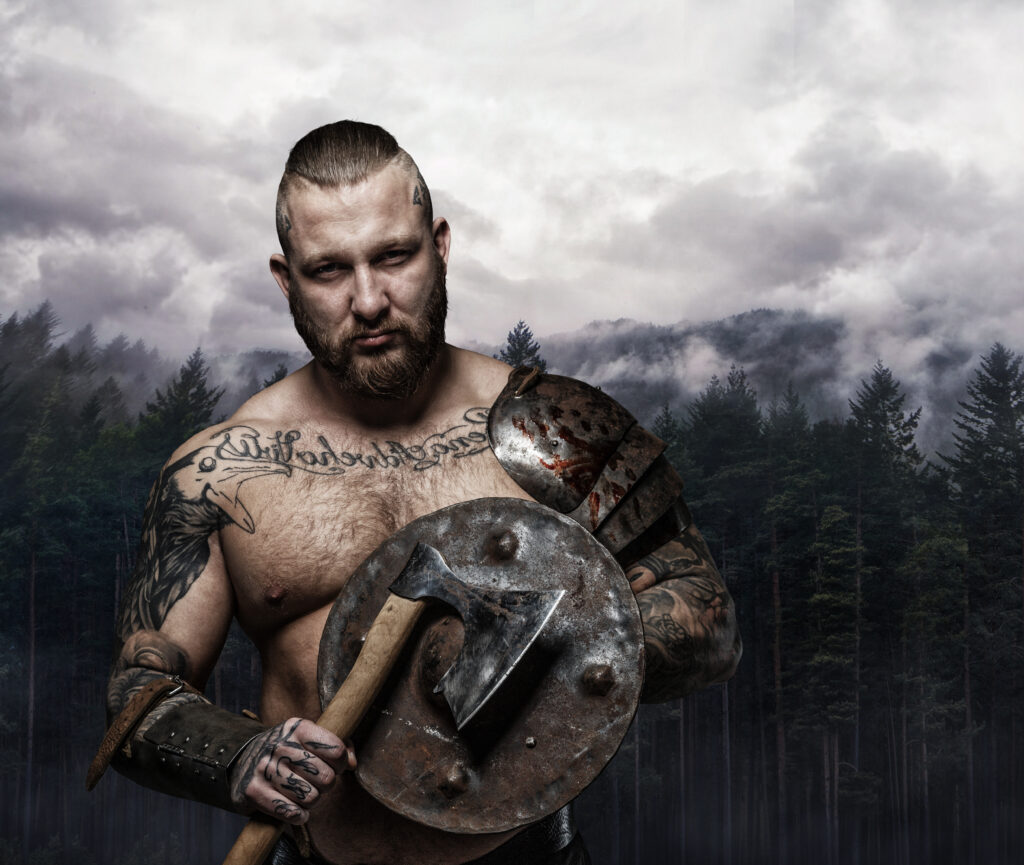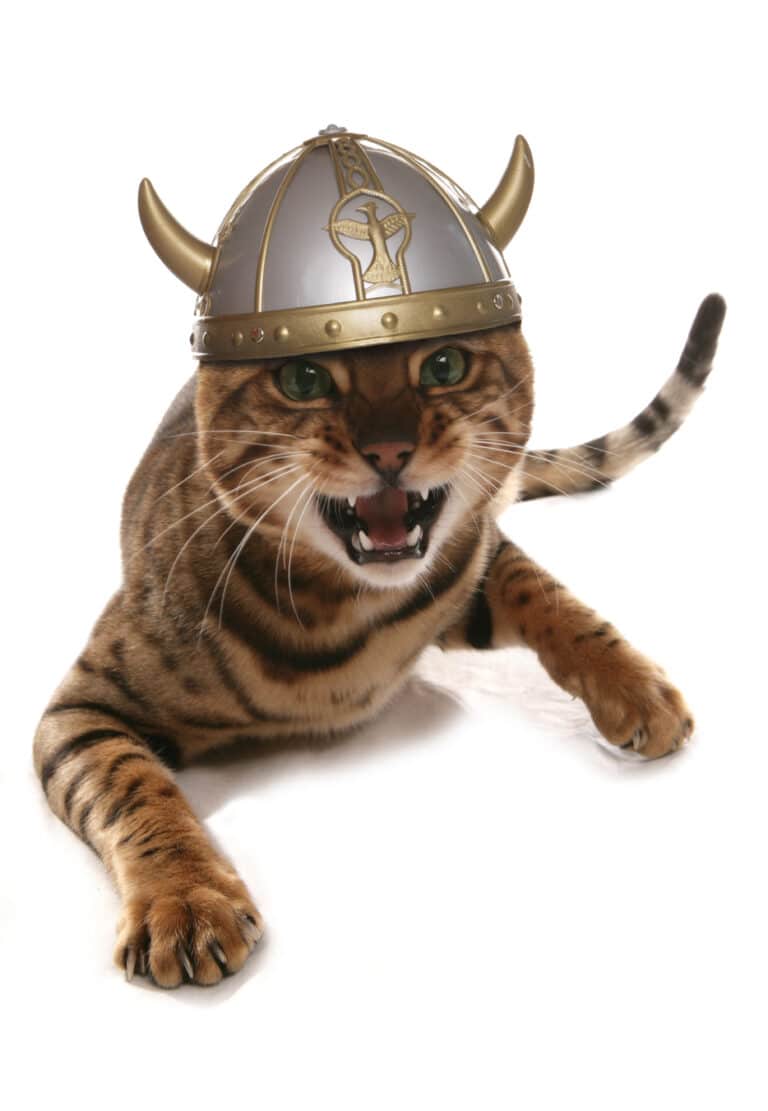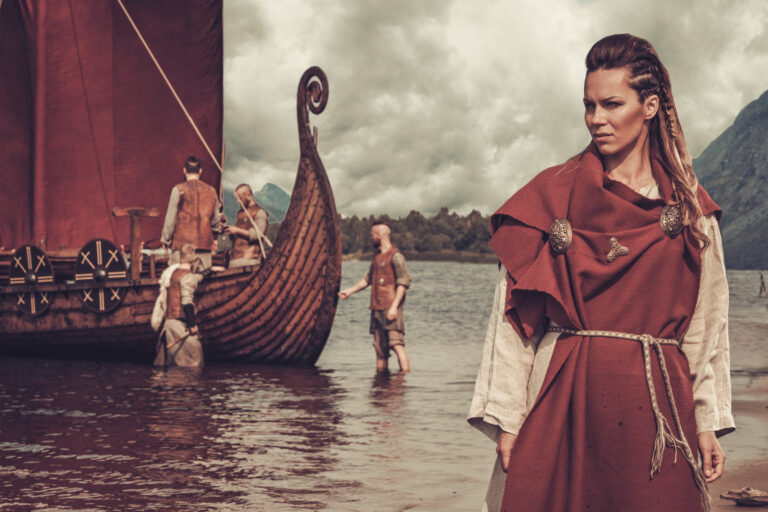How Tall Were the Vikings? (Average Viking Height)
So when we see Vikings on television and in film, they are typically pretty tall, very muscular, and are usually covered in tattoos. You might wonder how much of that is actually true. We know that there isn’t much evidence to show that vikings were covered in cool ink. But what was the average viking height? Were they actually super huge men that towered over their enemies? Luckily, with modern technology, this is something we can now sort of determine.

Burial Finds
We have plenty of viking age burials that have been unearthed. Many of these graves contain the bones of both men and women. Skeletal remains can be studied in various locations to determine height. Luckily archeologists and scientists have taken an interest in this question so the answers are out there. In short (get it) it’s easy enough to say that the average viking man was about 5’7″. The average viking age woman was roughly 5’3 (that’s my current height so I’m pleased to know I’m a modern day representation of a stout little viking woman). Aside from the bones, these burials also contained fragment materials from clothing. If you would like to know more about what the vikings wore, check out our post on viking clothing.

Average Viking Height
Today the average man is 5’9″ and women are more like 5’4″ (according to the Cleveland Clinic). So there is not a huge difference, but viking men and women were a little shorter…maybe. I say maybe because there is a ton to consider, and comparisons of a medieval society with a modern day first world society doesn’t really add up. There would clearly be considerations to make. The average American man and woman likely have a better diet than Scandinavians would have 1000 years ago. They also have more access to healthcare and are generally not plagued as much with sickness (although we did just have our own plague so fair play there). Anyway, you get it..you can’t really say they were shorter, because the conditions are not the same.
To better understand some of the challenges that led to variations in size, we will have a quick look at conditions that existed in the Middle Ages and what impacts they had on viking men and women.
What influences a populations height?
The first thing we need to considered are what factors would have influenced the populations health, and therefore growth. A small sample of skeletons from northern Europe determined a general height of populations from Scandinavia. The average person actually fell in height from 173.4 centimetres in the early Middle Ages (maybe around the 11th century) to a shorter stature of 167 centimetres. This low occurred during the 17th and 18th centuries. This was a decline of 6.4 centimetres.
It might be plausible to assume something like climate change, drought, famine, environmental factors, or plague could have resulted in this decline. The northern Europeans didn’t really recover to the earlier heights until the 20th century. It is likely that a viking raid would have exposed Scandinavian countries to diseases. This would have affected the average height of medieval Scandinavians. Without modern medicines, and vaccines, exposure to foreign diseases would have had crippling effects on societies. This, coupled with environmental factors would all play a part in the changing height of the vikings.

The ever present discussion about the word viking!
But let’s back it up a bit. First we need to talk about the word viking. We know from previous posts that we are using this colloquially to mean a people. But we also know that it was more of an occupation. Ergo those who work on plumbing are plumbers, so those who go viking, are vikings. So let’s assume it’s ok for us to understand the word viking to mean a people. We know that we mean it as Scandinavians who lived in northern Europe during the viking age. I’ll probably have to say that in almost every post because it really puts a knot in some people’s jaw. So just entertain me while I tell you that the “vikings” had a general height.
Galgedil Find
Archaeological finds of skeletons were studied in Galgedil, Denmark. Here they unearthed 57 sets of remains of viking age Scandinavians. The lot contained 24 male remains and 19 female remains, with six sets of adult remains being indeterminable, and eight sets of children’s remains being indeterminable. An examination of skeletons gives us important knowledge about the physical appearance of the vikings. Below you can read more about the height of the remains found in Denmark.

Archeological Findings – Average Height of the Vikings
The average height of a woman compared to a man is typically 93%. The average height of viking men from Galgesil was 172.6cm. The female skeletons were 161.4cm. The height difference is pretty much on par with the average finds of human remains from other viking burial sites. These have yielded results of men being 172.5 cm and the height of viking women being 159.0cm. For more on the digs at Galgedil, go check out this paper in the Danish Journal of Archaeology. This means that both men and women were shorter than the average we find today. While that it all interesting, I think what we just wanted to know was if the vikings were giant fearsome creatures like we see on TV and the answer to that seems to be no.
Pop Culture References
Does the TV show vikings bear any resemblance to actual finds? We are handed down the viking as looking like Ragnar Lothbrok. A famous viking with long hair, prominent brow ridges, blond hair, a prominent jaw, and blue eyes. Ragnar is depicted as the epitome of the archetypal bloodthirsty viking. But if you remember back to our post on viking laws, you’ll come to understand that warring wasn’t their only prerogative.
The TV show Vikings also features Ragnar’s son, Ivar the boneless. He is a good example of health conditions within viking society. Archaeological evidence can tell us more about what parts of Europe experienced good health. (If you want to know more about other parts of Europe the vikings in habited, check out our post on the vikings in Iceland.) Below we will check out the archaeological findings from a famous viking to learn more about what affected their stature and appearance. Some of this evidence can be gleaned only from the Norse sagas that inspire recent studies.
The Case of Egil Skallagrimsson
Egil was a viking warrior poet. He is the hero of the Old Norse Saga aptly titled Egil’s Saga. Within the saga Egil is described as having bones much larger than a regular human. His bones were not actually studied. In a new study from 2005, titled Paleopathology by Proxy the authors described “excavating words”. They mine the saga for hints to a diagnosis that might determine the case of Egil’s large stature. His skull is said to be extra thick, and covered in ridges like a scallops shell. I cannot remember why the know this, but his skull is also said to have been thick enough to withstand the blow from the reverse edge of an axe.

This was actually the first saga I ever read. Back in the day I took a vikings history class during my undergraduate degree here in Canada and the professor chose this as the major work for the class. I remember bits and pieces of the saga. I believe there is a section where they describe a very young Egil being beaten by many children. This may be the part where he is struck with an axe and survives. I also remember that it was said he killed a polar bear as a young child. This would speak to his strength, and likely his size. Egil is also described as being “far above normal height”.
This kind of brings us back down to earth a bit. We sometimes have these fantastical ideas that vikings were huge, but they were not. They were very average sized men and women, that were subject to the same health conditions we see throughout the ages. Many of these health and dietary concerns, as well as food shortages, were an important factor in determining height.
Thorkell the Tall – Tallest Scandinavian Viking
We can’t blame television entirely for our belief that the vikings were larger than life. Chronicles and oral tradition from the medieval period, particularly the sagas in Iceland tell tales of epic vikings. Because the vikings were known to dole our a lot of nicknames, we do come across some that allude to size. Thorkell the Tall is obviously one that leads us to believe there were some mighty men.
The Verdict?
Well, at the end of the day, I think we have to accept that Scandinavian men and women during the viking age were totally average. There is no evidence to suggest they were any larger than people from anywhere else in Europe at the time. Although they are slightly shorter than men and women from today, we know they were a little taller then those who came immediately after them.

They were the first major group of explorers to cross oceans and expose themselves to so many other populations, and therefore carry back many diseases. For that reason they were likely responsible for the future populations becoming a bit shorter, before recovering some height in the 20th century. But no, they were not giants, not even the berserkers. Those who do stand out as exceptionally tall, are reminiscent of people we see today who are the exception and not the norm. It’s common for those people to become larger than life in lore, and therefore might influence stories, and put dread in the hearts of their foes. But no, sorry to burst a large bubble, but the average viking height was totally normal.






